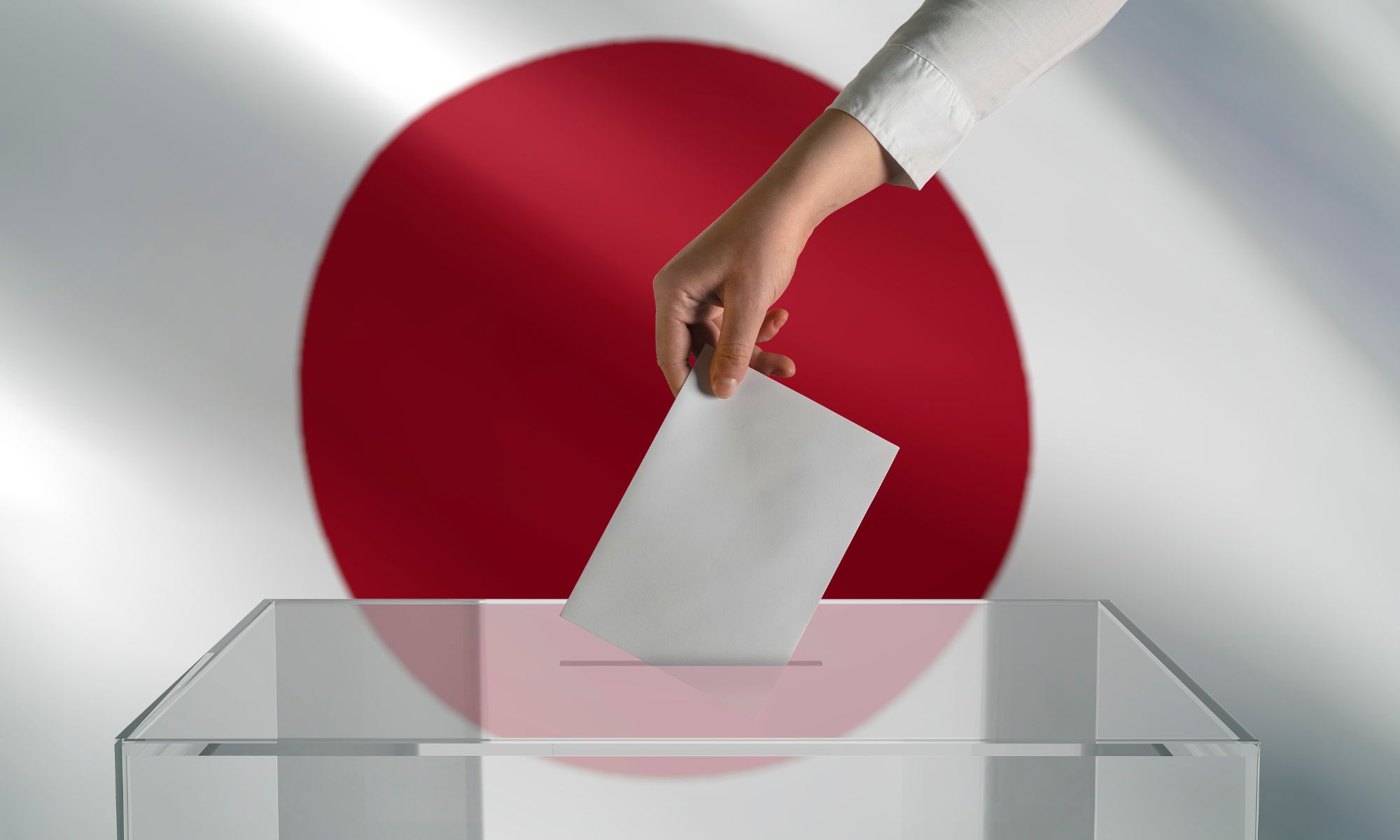Japan’s upper house election: democracy at a critical crossroads
Master of Public Policy student Mamiko Shimizu explores how the outcome of Japan’s latest upper house election signals a political turning point, and asks what this might mean for the future of democratic governance in one of the world’s largest economies.

Over the July 2025 holiday weekend, Japan held its triennial House of Councillors election. The election drew widespread attention and voter turnout rose to 58.51% – up roughly 7% from the previous election in 2022. The outcome marks a decisive shift in Japan’s political landscape.
Japan’s National Diet consists of two chambers: the lower House of Representatives and upper House of Councillors. Members of the upper house serve six-year terms, with half elected every three years.
This was the first upper house election since the ruling coalition, the Liberal Democratic Party (LDP) and Komeito, lost 64 seats in the lower house, falling below a majority. As a result, the search for alternatives has opened the door for smaller parties to gain traction.
Shifting momentum
Among the most notable developments over the past year was the rise of the Democratic Party for the People (DPP). In the 2024 lower house election, the party expanded its seats from 7 to 28, gaining significant traction, especially among voters in their 20s and 30s. Adopting the slogan ‘More Take-Home Pay’, the party pledged to raise the ¥1.03 million income cap for part-time workers. In a nationwide opinion poll in December 2024, the DPP received the most support of any opposition party. However, momentum slowed in May following the party’s endorsement of former lawmakers whose personal conduct, such as extramarital affairs, provoked criticism.
Contrasting the DPP’s dip, the party Sanseito saw a sharp rise in support. Founded in 2020, Sanseito is often labelled a far-right party. Initially focused on anti-vaccine and anti-globalist messaging, it fought this election under the banner ‘Japanese First’ and focused on what it called ‘excessive immigration’. Their reach, amplified by social media, resonated not only with younger voters, but also with people in their 40s and 50s. A poll conducted during the campaign showed Sanseito leading among opposition parties, with 8.1% support. As the party gained traction, online discourse shifted from economic concerns like inflation toward heated debates over immigration and issues concerning foreign residents and tourists in Japan.
A new balance of power
In this election, with 125 seats contested, the ruling coalition saw its seats drop from 66 to 47. The largest opposition party, the Constitutional Democratic Party of Japan, failed to expand its presence and retained its 22 seats.
Meanwhile, the DPP and Sanseito made substantial gains. The DPP secured 17 seats, more than quadrupling its representation. Sanseito grew from a single (non-contested) seat to 14, surpassing the 11-seat threshold required to submit legislation independently. The right-leaning Conservative Party of Japan also won its first two seats in the upper house.
Before the election, Prime Minister Ishiba stated that securing at least 50 contested seats was the ruling coalition’s minimum target, maintaining its upper house majority. Yet the LDP suffered a symbolic blow even in Osaka – Japan’s second largest city – losing a seat there for the first time in 27 years. Ultimately, the coalition fell three seats short of a majority, leaving it a minority in both houses.
Hope for the future
Amid a tectonic shift away from established parties and toward new alternatives, a notable source of hope has emerged with Team Mirai’s (‘Team Future’) entry into national politics. Led by AI engineer Takahiro Anno, who stood in Tokyo’s gubernatorial election in July 2024, Team Mirai was founded with the slogan ‘Toward a country where we can believe the future is bright’. With members’ age averaging 35, the party represents a new political generation. Their campaign emphasised a simple but powerful message: ‘One seat can change the future’. This reflects their goal to create a team of software engineers in Nagatacho, Tokyo’s political nerve centre, to tackle political and social challenges through technology, supported by the subsidies awarded to parties that secure at least one seat and over 2% of the national vote.
Rejecting divisive rhetoric, they focused solely on policy-driven campaigning. They secured 2.6% of the vote and one seat, officially becoming a national political party. Anno is set to enter the Diet amid growing anticipation: a new way of channelling the public’s will through technology might bring fresh momentum to Japanese politics.
Change or division?
This election divided seats among 11 parties, ending over a decade of the ruling coalition’s dominance and revealing a growing desire for new political choices. Japan may be entering a new era of multiparty politics.
Postwar Japan has remained a democratic state. Yet in recent years, voter turnout has declined and apathy has spread. 2024’s lower house election marked a turning point: for the first time in years, many citizens felt that ‘my vote can truly change things’. That sentiment carried over into this upper house election.
Citizens who feel profound urgency – and still believe in their country’s promise – are standing up and taking part. Democracy, once stagnant, is beginning to stir.
The day after the election, Shigeru Ishiba confirmed he would remain Prime Minister. Yet pressure for his resignation continues to build within the LDP. As a minority government, will the ruling coalition seek to govern through collaboration with the opposition, or even form a grand coalition? Or will the opposition unite to replace the government? While most opposition leaders insist they will not partner with the LDP, policy differences between the opposition parties complicate any clear path forward.
Internationally, Japan faces growing challenges. Even the US–Japan tariff deal, agreed after the election, has already shown signs of differing interpretations. Amidst this turbulence, both government and opposition must find a way forward. Political paralysis is not an option.
Change or division? Whether Japanese society can move forward – achieving true reform rather than fracturing further – depends on the choices we, the Japanese people, make.
Today, our still immature democracy stands at a critical crossroads.
The content of this article represents the personal views of the author and does not reflect the official stance of any affiliated organisation.

